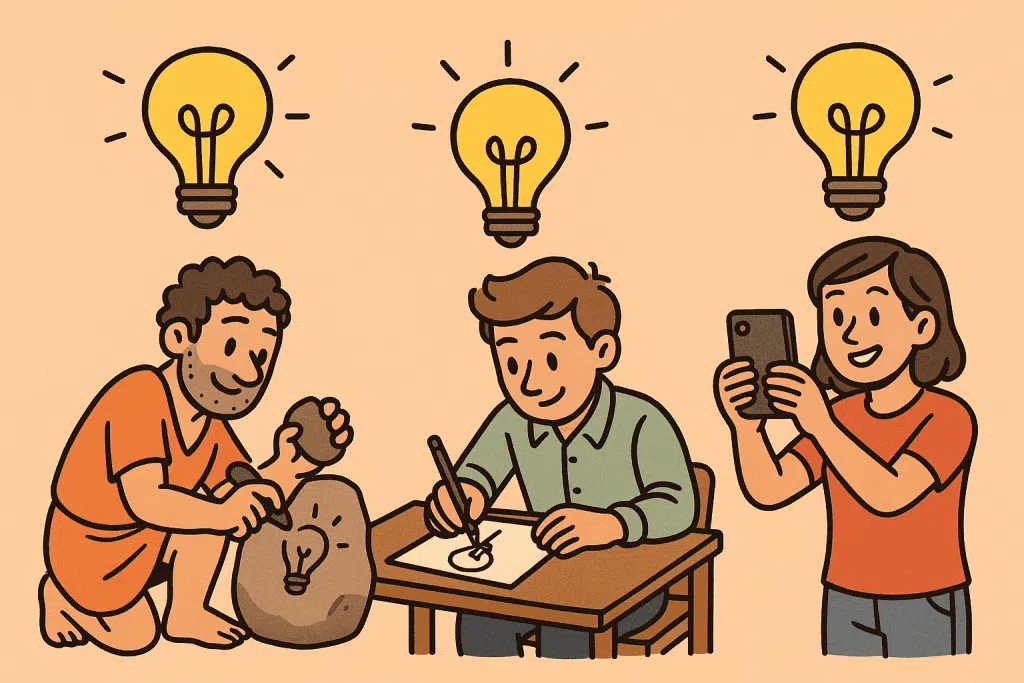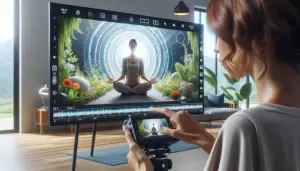How Idea Capture Changes Over Time
Lily Carter July 23, 2025
The evolution of idea capture is accelerating, driven by AI-powered tools that transform how we record, organize, and retrieve insights. Explore the rise of smarter, faster, and context-aware capture in this guide to modern tools and emerging trends.

1. Why the evolution of idea capture matters
From notebooks and sticky notes to digital apps and voice assistants, how we capture ideas has changed drastically—and what we use shapes what we remember and how we build on those ideas. The medium matters: handwritten notes create different neural pathways than voice memos, while digital tools offer searchability that paper cannot match.
Each method influences not just how we record thoughts, but how we later retrieve and develop them. The tactile experience of pen on paper engages motor memory in ways that make ideas more memorable, while voice capture preserves the natural flow and emotional tone of our thinking. Digital platforms excel at organizing and linking concepts across vast collections of information.
Today, AI-powered idea capture tools are disrupting traditional workflows and offering smarter ways to manage our thoughts. These systems don’t just store ideas—they actively participate in the creative process by suggesting connections, automatically organizing content, and identifying patterns we might miss. They can transcribe voice notes with remarkable accuracy and transform scattered thoughts into coherent, actionable formats.
2. The rise of AI-powered idea capture tools
AI has transformed idea capture from passive recording to intelligent enhancement of our cognitive processes. These tools now understand context, extract meaning, and create connections we might otherwise miss.
2.1 Real-time transcription & intelligent summaries
AI notetakers like Otter.ai, Fireflies.ai, and Fathom record and transcribe meetings, then generate highlights and action items automatically. These platforms have revolutionized meetings by eliminating the cognitive burden of simultaneous listening and note-taking, allowing participants to engage more fully while ensuring nothing important is lost.
Modern AI transcription services go far beyond basic speech-to-text conversion. They can identify different speakers, distinguish between main points and tangential discussions, and even detect emotional undertones in conversations. Advanced features include recognizing industry-specific terminology, integrating with calendar systems for context, and creating searchable archives of organizational knowledge. Some platforms provide meeting analytics, tracking metrics like speaking time distribution and decision-making patterns. A LinkedIn overview notes top tools combine “real-time functionality with seamless usability.”
2.2 Personal knowledge management: your second brain
Tools such as Notion AI and NotebookLM are evolving into digital “second brains,” organizing everything from scattered thoughts to research in an interconnected knowledge base. This represents a shift from traditional note-taking toward creating dynamic, living repositories of knowledge that grow more valuable over time.
These systems leverage AI to create connections between disparate information, revealing patterns and relationships human cognition might overlook. They actively help users discover insights by suggesting relevant connections, identifying recurring themes, and highlighting gaps in knowledge. Modern PKM tools incorporate semantic search that understands meaning and context beyond keywords, generate summaries by synthesizing multiple sources, and create visual knowledge maps. The integration of large language models has enabled these platforms to serve as intelligent research assistants, answering questions about stored content and helping users articulate thoughts more clearly.
3. Key trends driving change in idea capture
3.1 Multimodal capture—audio, text, images
AI tools support voice transcription, OCR, and even image capture in real time, opening a new era where ideas can be caught from whiteboards, handwritten notes, and conversations alike.
3.2 AI-augmented note expansion
Tools like NoTeeline let you jot quick bullet points (“micronotes”) and automatically expand them into polished summaries via LLMs—reducing effort but retaining your style .
3.3 Collaborative AI ideation
AI isn’t just recording; it’s brainstorming. Frameworks like AI-Augmented Brainwriting blend human input with LLM expansion and even idea evaluation.
4. Benefits & challenges of modern capture tools
Benefits
- Efficiency boosts: Free from manual formatting and transcription, focus shifts to creative insight.
- Better idea reuse: AI can tag, link and categorize ideas, making old notes meaningful again.
- Team collaboration: Shared, searchable, actionable meeting notes foster transparent follow-up.
Challenges
- Privacy & consent concerns: AI may record participants unaware—legal implications follow.
- Information overload: Without structure, AI-generated content can drown users in noise.
- Hallucination risk: Automated expansions may introduce inaccuracies—requiring manual review.
5. Practical guide: adopting AI-powered idea capture
- Define your goal
- Meeting summaries? Use Otter.ai or Fireflies.
- Idea brainstorming? Try NotebookLM or Notion AI.
- Choose tools with key features
- Real-time speech-to-text, OCR, synchronization, summaries, tagging.
- Pilot with small teams
- Run confidential projects with opt-in participants, evaluate output quality and transparency.
- Set guidelines
- Communicate AI recording plans. Decide on AI-on or AI-off zones to foster candid dialogue.
- Review & refine
- Regularly audit AI output for accuracy and bias. Adjust tool settings and workflows.
- Scale gradually
- Once trust builds, deploy tools more widely; measure benefits like time saved or insights generated.
6. Future frontiers in idea capture
Bots attending meetings: As seen in Zoom and Teams, “digital twin” bots will soon attend meetings, reason, and even respond on our behalf. These AI avatars will evolve beyond transcription to become intelligent representatives that understand context, engage in discussions, and make decisions based on your established patterns. Your bot could negotiate meeting times during scheduling conflicts or contribute ideas during brainstorming sessions based on your previous work.
Multimodal capture & AR integration: Expect seamless capture across voice, visuals, real-world context through smart glasses and ambient computing systems. Future AR devices will monitor our environment, capturing not just what we say but where we are and what we’re interacting with. These systems will create rich records of our creative processes—tracking the cafe where breakthrough ideas emerged, whiteboard sketches that sparked innovation, or walking routes that led to insights.
Brain-computer interfaces (BCIs): Pre-announcement research from companies like Neuralink and Meta hints at capturing thoughts directly—pushing boundaries far beyond keyboards. Early implementations may translate mental imagery into digital formats or transcribe internal monologue without vocalization. Advanced systems could capture pre-verbal ideation, recording neural patterns that precede conscious thought and enabling direct brain-to-brain idea transmission.
7. Conclusion
The evolution of idea capture from pen and paper to AI-augmented agents is well underway. With real-time transcription, intelligent summarization, and collaborative workflows, today’s tools are helping us think bigger and smarter. But trust, structure, and mindful implementation are key to ensuring AI empowers rather than overwhelms.
Reference
Ayele, W. Y., & Juell‑Skielse, G. (2022). A Systematic Literature Review about Idea Mining: The Use of Machine‑driven Analytics to Generate Ideas. arXiv. Retrieved from https://arxiv.org
Inie, N., & Dalsgaard, P. (2020). How Interaction Designers Use Tools to Manage Ideas. arXiv. Retrieved from https://arxiv.org
Ding, O. (2023). Situational Note‑taking: Capture Significant Insights Outside the Room. Medium. Retrieved from https://medium.com/the-art-of-bagging







